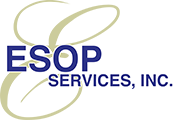CASE STUDY: Lane Enterprises, Inc
Through four ownership transitions to 100% Employee Owned
By Paige A. Ryan, ESOP Services, Inc.
|
Employee ownership has been part of Lane Enterprise Inc’s (“Lane”) history for more than 40 years. Founded in 1934 by Ray Lane, the company was acquired by a management team in 1962, sold to Bethlehem Steel in 1969, and then acquired by the current managers in 1986.
Thanks to a recently completed employee stock ownership plan (ESOP), the benefits of ownership have been extended to every full-time employee who works at the corrugated metal and plastic pipe company. Moreover, the leveraged ESOP has enabled the management team to finance a business perpetuation plan brought about by the impending retirement of much of the current management team. Why use an ESOP? The answer has to do with Lane’s long tradition of employee ownership, combined with the tax benefits offered by the ESOP. When 30 salaried employees, led by president and general manager Tom Wonsiewicz, acquired the company in 1986, they imparted the philosophy that if you owned Lane shares, you walked in the door every morning and contributed to the company’s growth and success. Since then, the company has grown steadily to become the second largest national producer of corrugated metal pipe, and one of the two major suppliers of metal and plastic drainage pipe in its market area. Lane also offers metal powder coating services, and currently has more than 300 employee-owners serving the Northeast and Mid-Atlantic states. Lane’s 61 shareholders, most of whom were part of the acquiring group in 1986 (see inset), are an energetic group of employee managers/shareholders, with an average age of 57. Because the company allows for retirement age at 60, the demographics of the current ownership structure were becoming a growing concern for Lane’s board of directors. Wonsiewicz and board members recognized that with so many owners approaching retirement, the company needed a plan for recapitalizing and creating liquidity. Initially, Lane and its board entertained several serious offers to buy the company. While not successful, they provided a clear indication of market value. The ESOP, however, offered a unique opportunity to extend the benefits of profitable growth to all employees while providing a way for senior employee/owners to cash out and benefit from their investment. “When you look at Lane’s history, the legacy of employee ownership is clear from the founder through three ownership transitions,” explains Wonsiewicz. “The transition to an ESOP was not only a logical extension of the company’s ownership culture. It was the best vehicle for achieving our business perpetuation goals.” |
